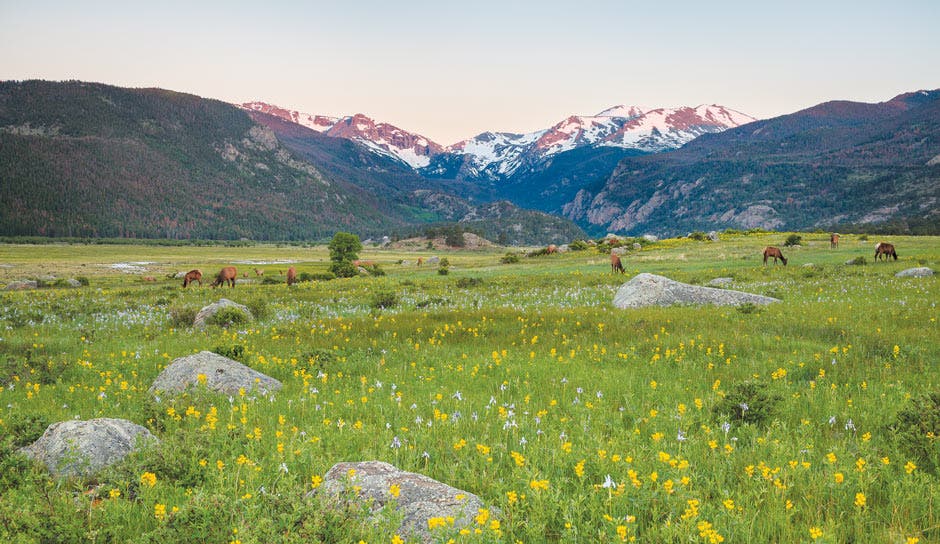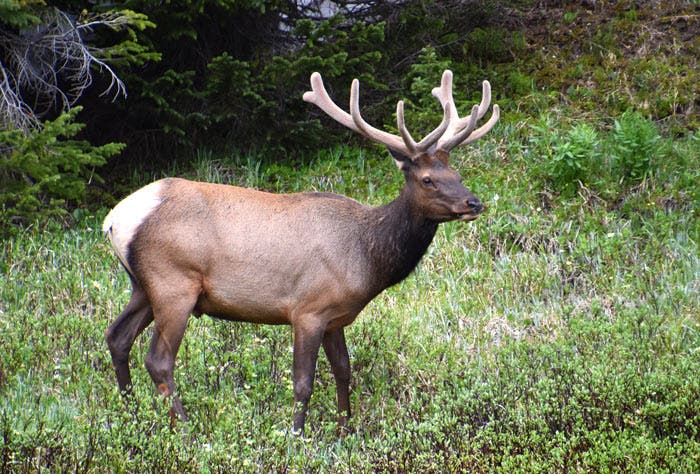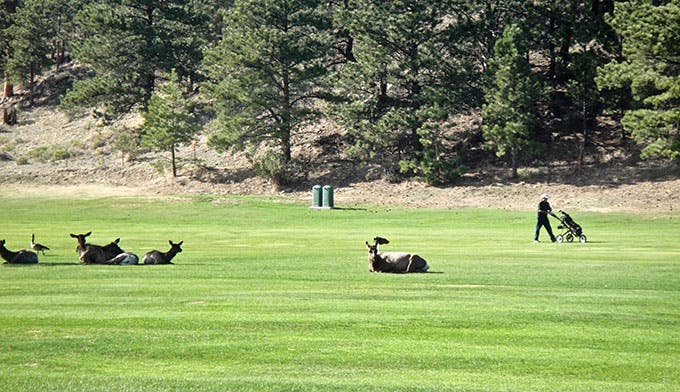Where to See Elk in Rocky Mountain National Park

Elk bucks sparring in Rocky Mountain National Park (Photo: Kathee Johnson)

Rocky Mountain National Park is known best for two reasons: mountains and Elk. A defining sight in Rocky Mountain National Park, Elk are large, loud, and highly visible. Traveling in herds across open tundra and low-lying valleys, Elk are routinely considered the main wildlife attraction.
Nearly wiped out by hunters during the late 1800’s, Elk were reintroduced into the Park in 1913. Slowly regaining their powerful presence it is now believed there are over 2,500 Elk thought the Park at any given time. Residing in the high reaches of the backcountry during summer, the Elk move down into lower valleys during fall to mate and ride out the winter. This is also a prime time to view the Elk as bulls loudly bugle in search of mates.
Seeing Elk in Rocky Mountain Park

Elk prefer the high areas in the backcountry during the summer. One of our favorite trails to view herds is the North Longs Peak Trail east of the Boulder Brook Trail.
Elk move down into the lower valleys during the fall and winter. During this time, which typically lasts from mid-September to mid-October, larger, antlered males weighing up to 1,100 pounds and standing roughly 5 feet tall try to attract female elk, known as cows.
Never approach an Elk or try to pet it since they can charge without warning. If you do encounter a heard of Elk in the high country make sure not to startle them. Instead cautiously walk around the herd making sure to stay in their sight lines.
Elk Rutting Season
The Fall is an especially good time to look for elk as they’re in the height of their mating season, known as the rut season. This is one of the true highlights of Rocky Mountain National Park. The bugles start out as a high-pitch cry and then become a series of low resonating grunts. The point is to attract as many cows as possible to the bull Elk. Throughout the Park and surrounding regions the bulls bugle can be heard signifying the changing season and start of winter preparation.
Possibly one of the best ways to experience this phenomenon is to head into the backcountry during a full moon and fall asleep under the starts. The loud bugles reverberate throughout the park, and as surrounding quaking aspens shimmer against the full moon light, the experience can become surreal. Also look for them on the edge of clearings in Moraine Park, Upper Beaver Meadows, Horseshoe Park and Kawuneeche Valley. The North Longs Peak Trail east of the Boulder Brook Trail is another great spot. Dawn and dusk are prime viewing times.
Related story: Autumn Elk Rutting Season
Elk in Estes Park, Colorado
Elk are common sight in the gateway town of Estes Park. In fact, one herd of about 30 elk call Estes Park their home. Visitors to the town are likely to see elk all year round stopping traffic, munching away on flowers and roaming around neighborhoods. The elk especially like the town’s two golf courses, so check out the 9-hole course near the Information Center by the intersection of Hwy 34 and Hwy 36 right downtown and the 18-hole course a little south of Hwy 36 on Fish Creek Road east of Lake Estes. They’re also fond of the north end of town with its wide-open spaces.
